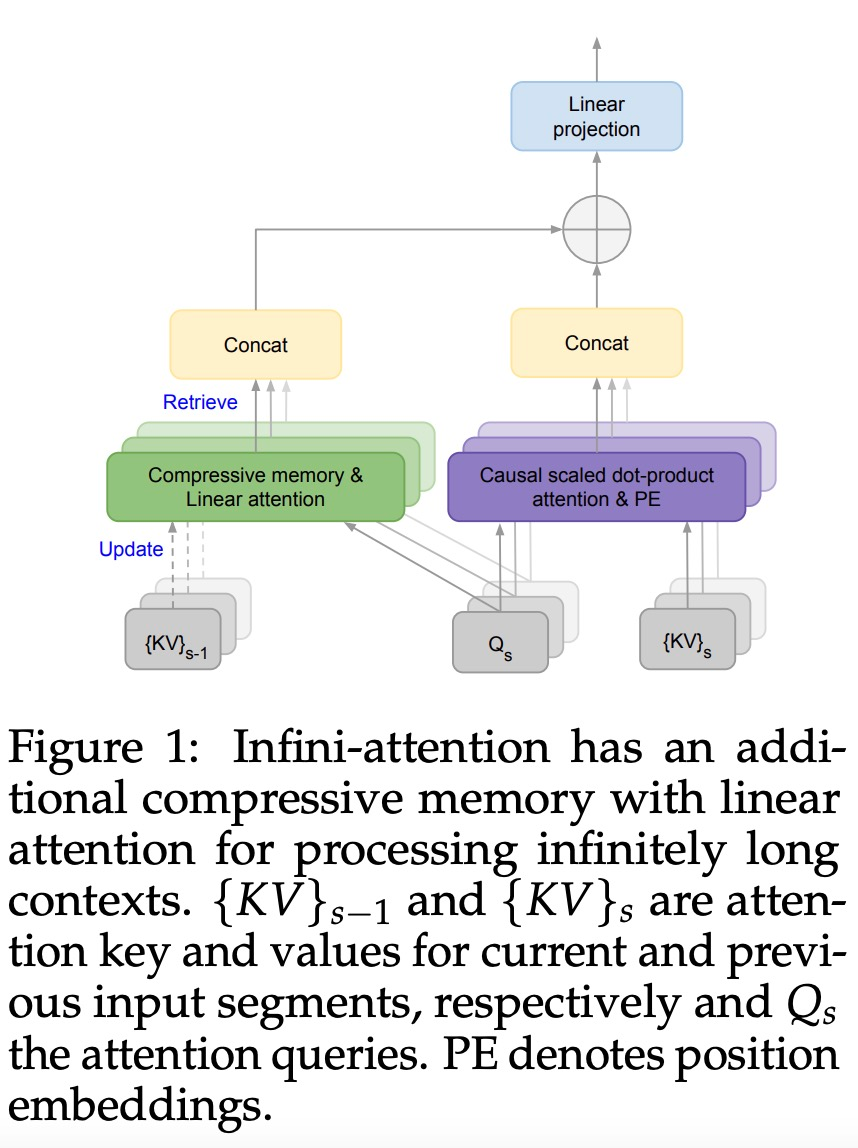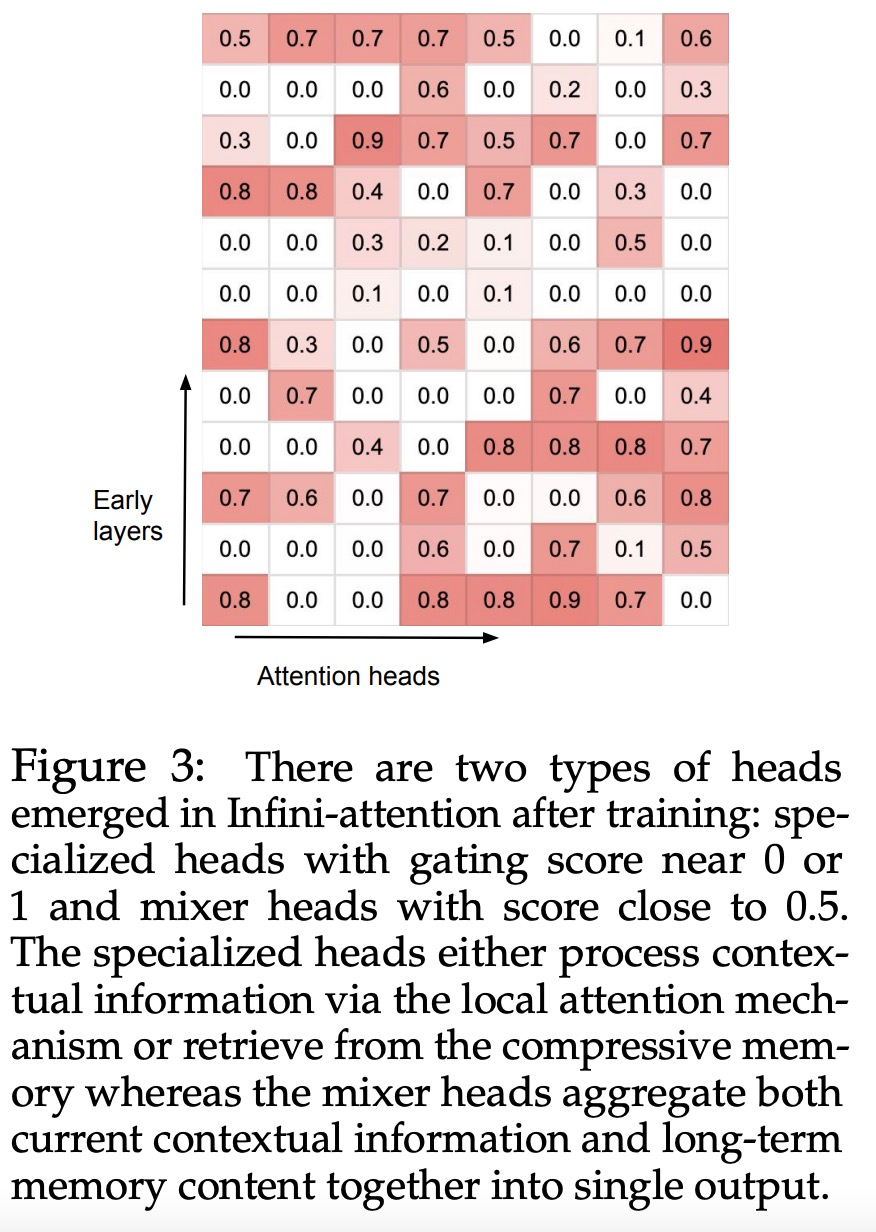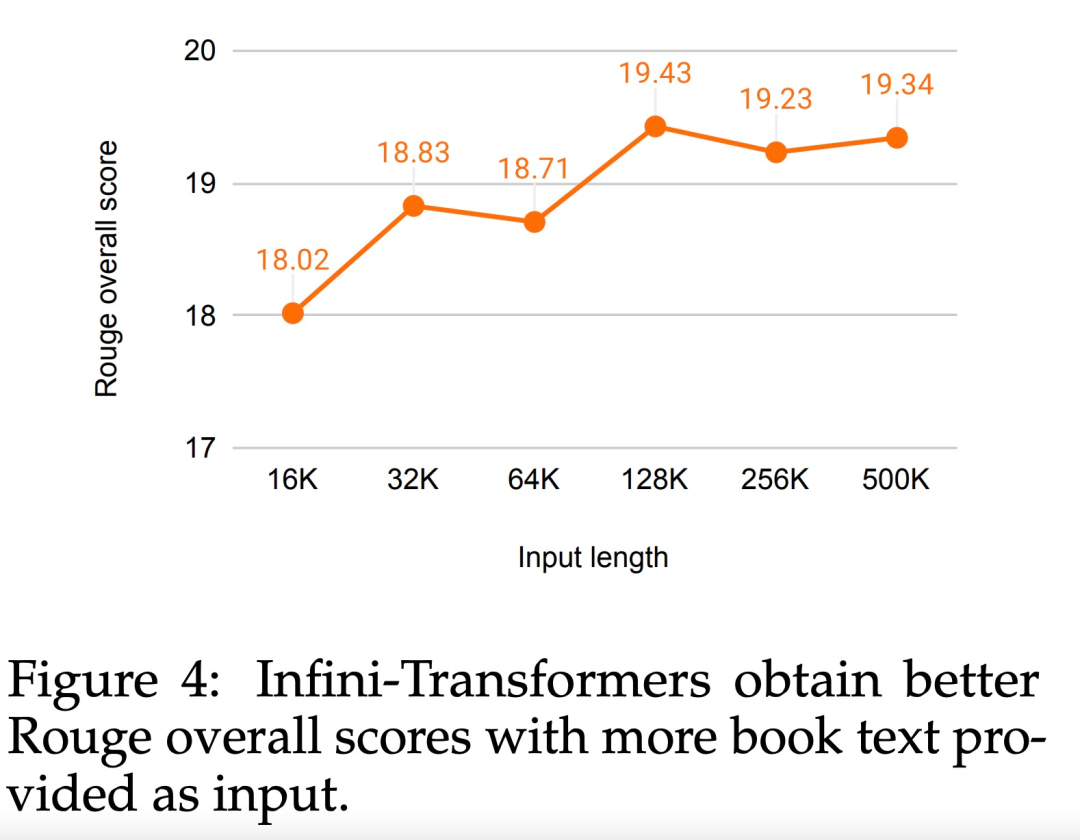 Technology peripherals
Technology peripherals
 AI
AI
 Directly expands to infinite length, Google Infini-Transformer ends the context length debate
Directly expands to infinite length, Google Infini-Transformer ends the context length debate
Directly expands to infinite length, Google Infini-Transformer ends the context length debate
I wonder if Gemini 1.5 Pro uses this technology.
Google has made another big move and released the next generation Transformer model Infini-Transformer.
Introduces a practical and powerful attention Force mechanism Infini-attention - with long-term compressed memory and local causal attention, can be used to effectively model long-term and short-term context dependencies; Infini-attention has a standard scaling dot product Attention (standard scaled dot-product attention) is minimally changed and is designed to support plug-and-play continuous pre-training and long-context adaptation; This approach enables Transformer LLM is capable of processing extremely long inputs in a streaming manner, scaling to infinitely long contexts with limited memory and computing resources.

- ## Paper link: https://arxiv.org/pdf/2404.07143.pdf
- Paper title: Leave No Context Behind: Efficient Infinite Context Transformers with Infini-attention








The above is the detailed content of Directly expands to infinite length, Google Infini-Transformer ends the context length debate. For more information, please follow other related articles on the PHP Chinese website!

Hot AI Tools

Undresser.AI Undress
AI-powered app for creating realistic nude photos

AI Clothes Remover
Online AI tool for removing clothes from photos.

Undress AI Tool
Undress images for free

Clothoff.io
AI clothes remover

Video Face Swap
Swap faces in any video effortlessly with our completely free AI face swap tool!

Hot Article

Hot Tools

Notepad++7.3.1
Easy-to-use and free code editor

SublimeText3 Chinese version
Chinese version, very easy to use

Zend Studio 13.0.1
Powerful PHP integrated development environment

Dreamweaver CS6
Visual web development tools

SublimeText3 Mac version
God-level code editing software (SublimeText3)

Hot Topics
 1662
1662
 14
14
 1419
1419
 52
52
 1312
1312
 25
25
 1262
1262
 29
29
 1235
1235
 24
24
 Laravel Eloquent ORM in Bangla partial model search)
Apr 08, 2025 pm 02:06 PM
Laravel Eloquent ORM in Bangla partial model search)
Apr 08, 2025 pm 02:06 PM
LaravelEloquent Model Retrieval: Easily obtaining database data EloquentORM provides a concise and easy-to-understand way to operate the database. This article will introduce various Eloquent model search techniques in detail to help you obtain data from the database efficiently. 1. Get all records. Use the all() method to get all records in the database table: useApp\Models\Post;$posts=Post::all(); This will return a collection. You can access data using foreach loop or other collection methods: foreach($postsas$post){echo$post->
 CS-Week 3
Apr 04, 2025 am 06:06 AM
CS-Week 3
Apr 04, 2025 am 06:06 AM
Algorithms are the set of instructions to solve problems, and their execution speed and memory usage vary. In programming, many algorithms are based on data search and sorting. This article will introduce several data retrieval and sorting algorithms. Linear search assumes that there is an array [20,500,10,5,100,1,50] and needs to find the number 50. The linear search algorithm checks each element in the array one by one until the target value is found or the complete array is traversed. The algorithm flowchart is as follows: The pseudo-code for linear search is as follows: Check each element: If the target value is found: Return true Return false C language implementation: #include#includeintmain(void){i
 What to do if Redis memory usage is too high?
Apr 10, 2025 pm 02:21 PM
What to do if Redis memory usage is too high?
Apr 10, 2025 pm 02:21 PM
Redis memory soaring includes: too large data volume, improper data structure selection, configuration problems (such as maxmemory settings too small), and memory leaks. Solutions include: deletion of expired data, use compression technology, selecting appropriate structures, adjusting configuration parameters, checking for memory leaks in the code, and regularly monitoring memory usage.
 How to optimize system performance with Debian Message
Apr 02, 2025 am 08:09 AM
How to optimize system performance with Debian Message
Apr 02, 2025 am 08:09 AM
Debian systems are known for their stability and security, but performance optimization still needs attention. This article introduces some commonly used Debian system performance optimization methods. It does not directly use "DebianMessage" (maybe refer to system logs) for optimization, but improves efficiency by monitoring and adjusting system resources. Performance Monitoring Tool The following tools can help you monitor system resource usage in real time: top: display process information in real time, including CPU and memory usage. htop: (if available) interactive process viewer, more intuitive than top. vmstat: Displays virtual memory, disk, CPU and process activity information. iostat: Display disk I/O statistics, such as read and write speed
 What is the impact of Redis persistence on memory?
Apr 10, 2025 pm 02:15 PM
What is the impact of Redis persistence on memory?
Apr 10, 2025 pm 02:15 PM
Redis persistence will take up extra memory, RDB temporarily increases memory usage when generating snapshots, and AOF continues to take up memory when appending logs. Influencing factors include data volume, persistence policy and Redis configuration. To mitigate the impact, you can reasonably configure RDB snapshot policies, optimize AOF configuration, upgrade hardware and monitor memory usage. Furthermore, it is crucial to find a balance between performance and data security.
 How to optimize jieba word segmentation to improve the keyword extraction effect of scenic spot comments?
Apr 01, 2025 pm 06:24 PM
How to optimize jieba word segmentation to improve the keyword extraction effect of scenic spot comments?
Apr 01, 2025 pm 06:24 PM
How to optimize jieba word segmentation to improve keyword extraction of scenic spot comments? When using jieba word segmentation to process scenic spot comment data, if the word segmentation results are ignored...
 What are the Redis memory data types?
Apr 10, 2025 pm 02:06 PM
What are the Redis memory data types?
Apr 10, 2025 pm 02:06 PM
Redis provides five core memory data types: String: basic string storage, supporting incremental/decreasing operations. List: Bidirectional linked list, efficient insertion/deletion operation. Set: Unordered set, used for deduplication operations. Hash: Key-value pair storage, suitable for storing structured data. Zset: Ordered set, each element has fractions, and can be sorted by fractions. Choosing the right data type is critical to optimizing performance.
 How to set the Redis memory size according to business needs?
Apr 10, 2025 pm 02:18 PM
How to set the Redis memory size according to business needs?
Apr 10, 2025 pm 02:18 PM
Redis memory size setting needs to consider the following factors: data volume and growth trend: Estimate the size and growth rate of stored data. Data type: Different types (such as lists, hashes) occupy different memory. Caching policy: Full cache, partial cache, and phasing policies affect memory usage. Business Peak: Leave enough memory to deal with traffic peaks.



